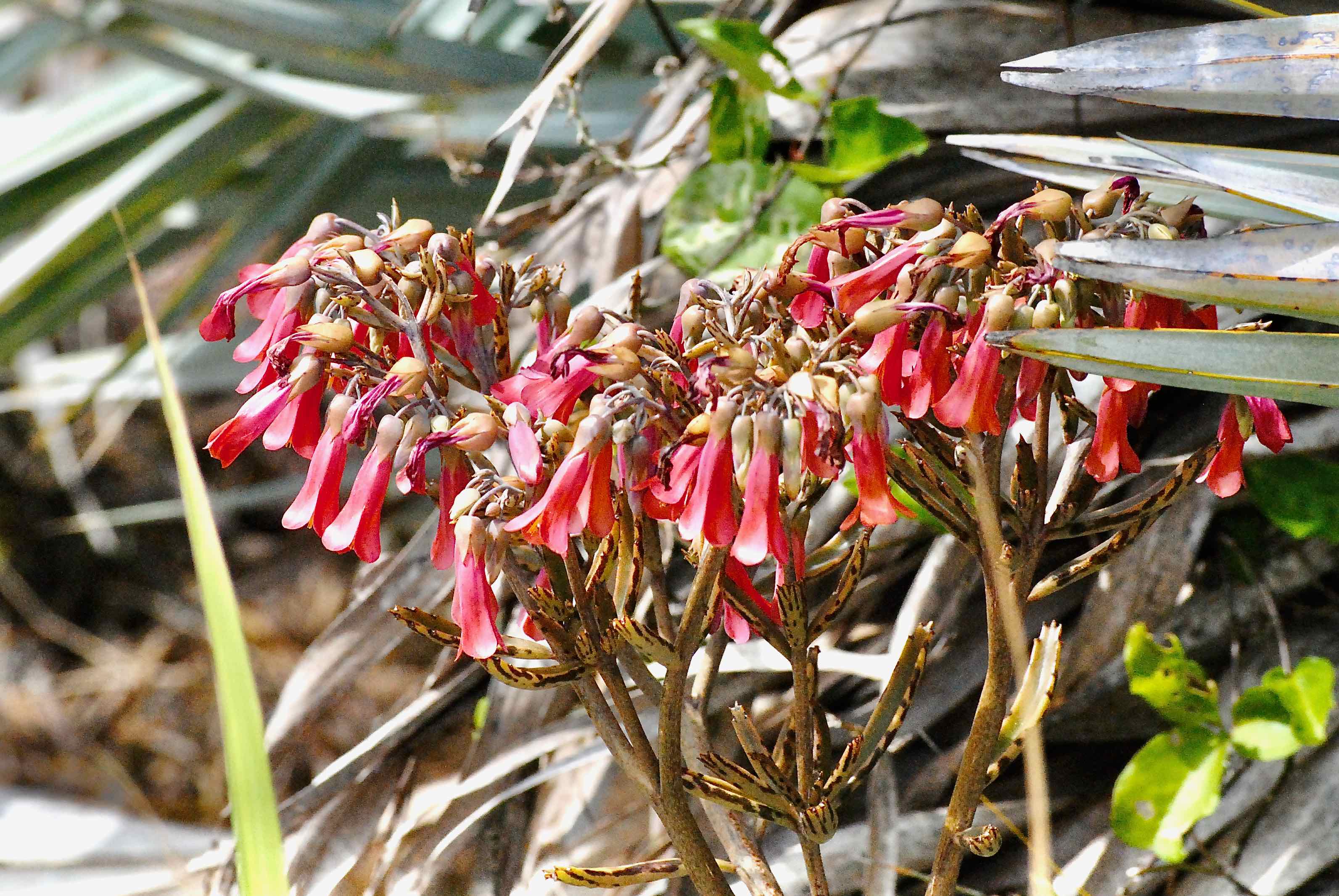
Devil's backbone, photographed at Crystal Lake Sand Pine Scrub Natural Area, Pompano Beach, Broward County, in February 2014.
Devil's backbone, Kalanchoe daigremontiana, is truly one bizarre plant. It's also an increasingly problematic one.
It is a succulent, a native of Madagascar that is cultivated as an ornamental and as a house plant. The problem is that it reproduces like crazy. Somewhere along the line, it escaped into the wilds of South Florida where it has become established.
Devil's backbone is only found growing wild in Florida among the 48 contiguous states, but it's also found in Hawaii and Puerto Rico, where it is considered an invasive. The Florida Exotic Plant Pest Council has not classified it as such here (two of its cousins were added as invasives in 2017). Several groups, including the Florida Natural Area Inventory, are monitoring the plant's spread, and its potential to displace native plant species.
It is a succulent, meaning it has thick, fleshy leaves and stems. The plant itself can hit three feet tall and has spoon-like leaves that grow along the stem either in whorls or opposite each other. It sends out above-ground roots that can enter the ground and produce new shoots. Overall, it has a shallow root system. It grows in dry places and is extremely drought tolerant.
Devil's backbone is a short-lived perennial, with a vegetative stage that usually lasts two year — it can be longer — and a flowering stage that is the plant's last act. It will flower, produce fruit and die. The flowers are clustered umbrella-like, pink to red, tubular and upside down. However, it flowers sporadically, sometimes not at all.
Devil's backbone reproduces, through the seeds produced by its flowers and by small plantlets that develop on the tips of its leaves. A single fruit can contain as many as 16,000 tiny seeds.
According to the Florida Natural Area Inventory, the first record of devil's backbone growing wild here dates back to 1934. How it got here isn't stated, but most likely imported as an ornamental. That's pretty much how it has made its way around the globe. It further spreads by its wind-dispersed seeds or by improperly disposed garden waste. These days, both plants and seeds are widely available on the Internet. According to the U.S. Department of Agriculture's distribution maps, the plant's statewide range is from Martin County south into the Keys. Other sources show it spreading northward along the Atlantic Coast.
It is capable of forming dense thickets that crowd out native species. It's a particular threat in dry habitats, like scrubs and coastal dunes. Because of its shall root system, it doesn't hold sand nearly as well as the natives it displaces, making the dunes themselves vulnerable to destruction. It also produces allelopathic chemicals, which inhibit other plant species from growing nearby. According to the Invasive Species Copendium, devil's backbone is considered invasive in Cuba, Venezuela, Spain, South Africa, Australia and New Caledonia.
Other names for devil's-backbone include mother-of-millions, mother-of-thousands, maternity plant, alligator plant and Mexican hat plant. It also has a second scientific name, Bryophyllum daigremontianom, although K. daigremontiana seems to be the generally accepted name. It is a member of Crassulaceae.
Crystal Lake Sand Pine Scrub Natural Area
Click on photo for larger image
U.S. Department of Agriculture Distribution Maps
F






